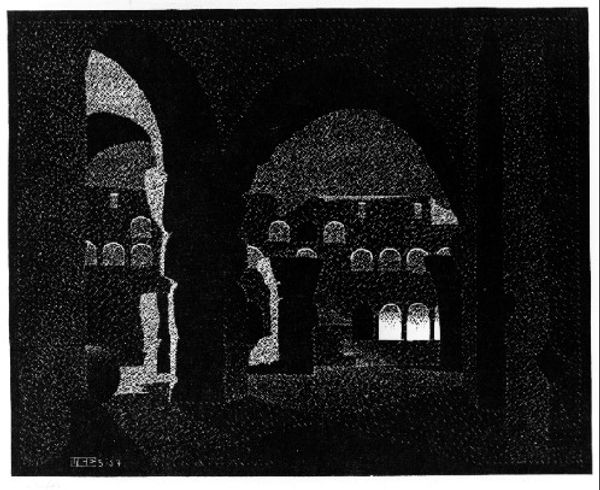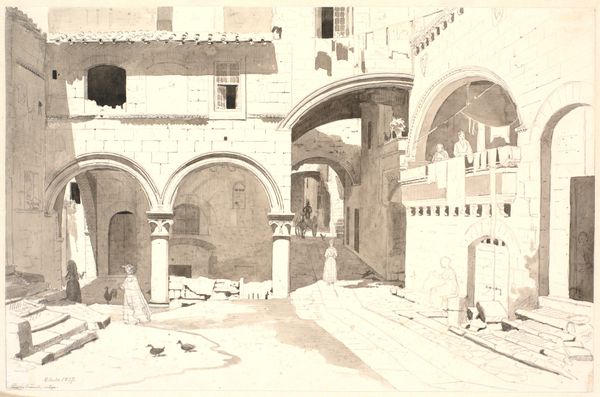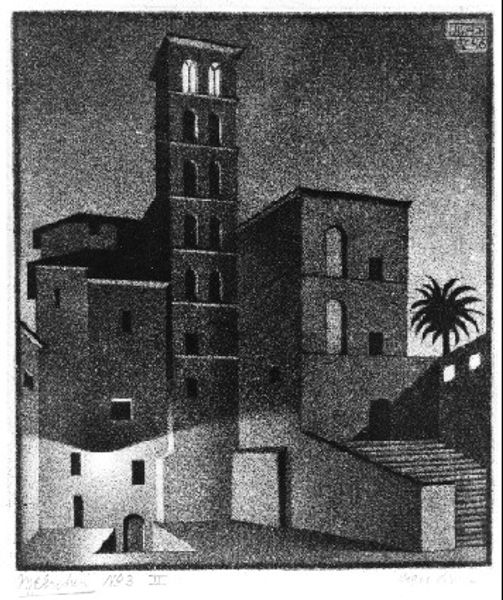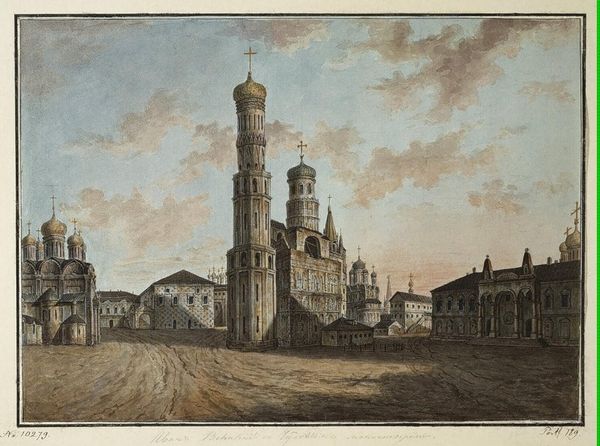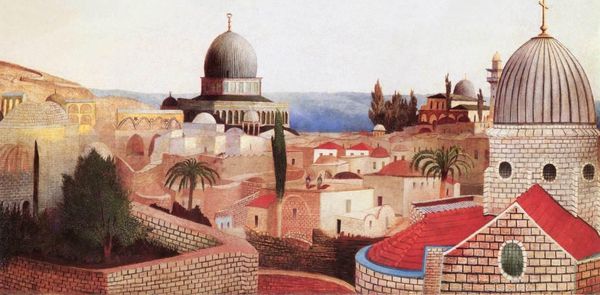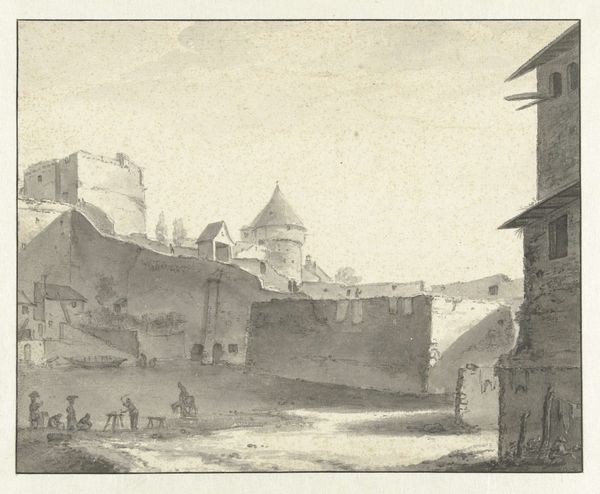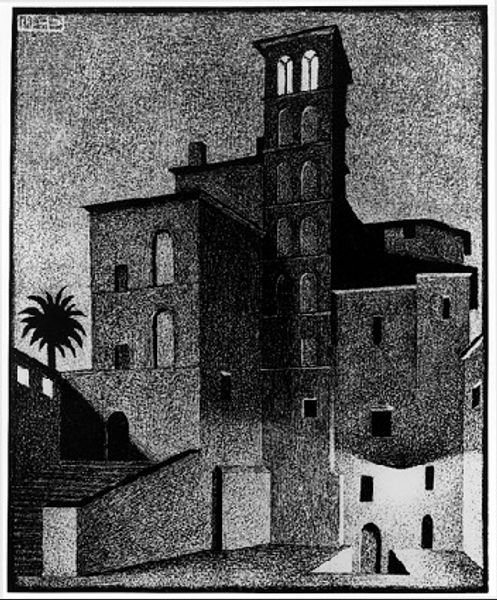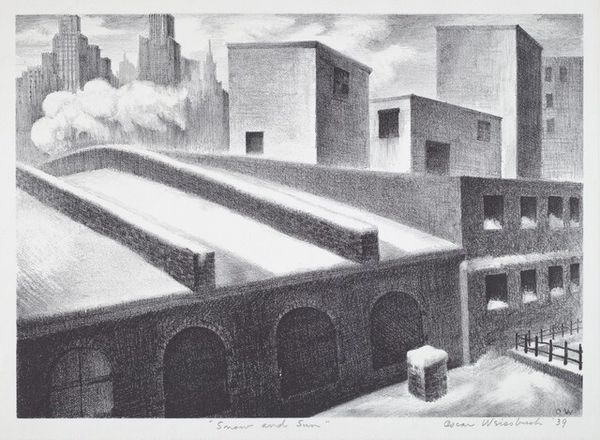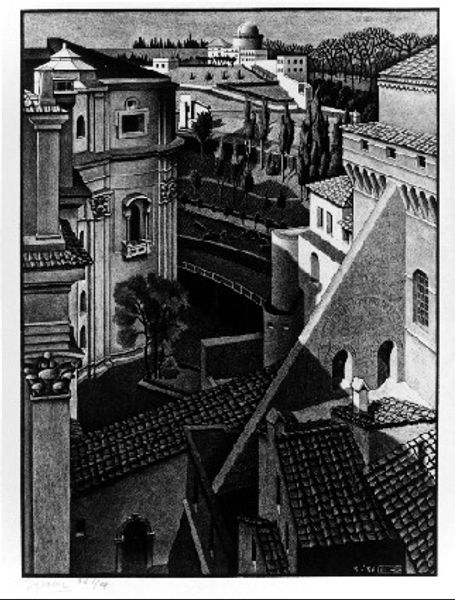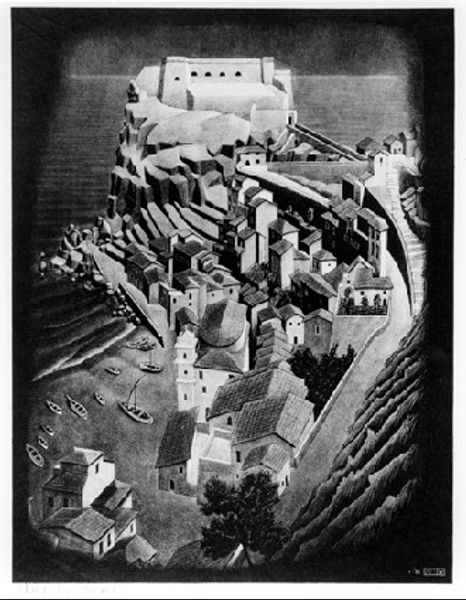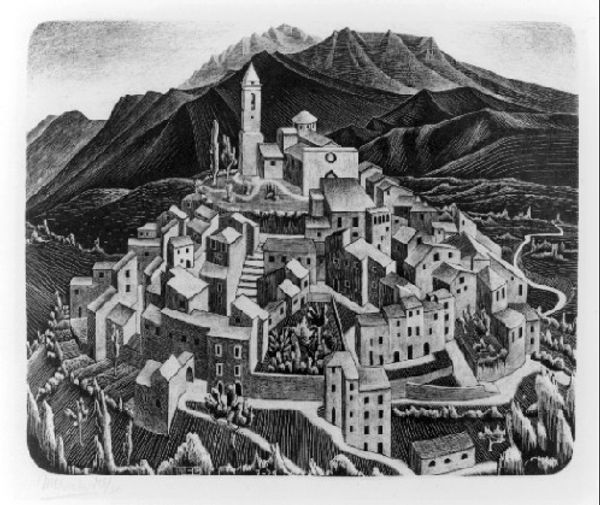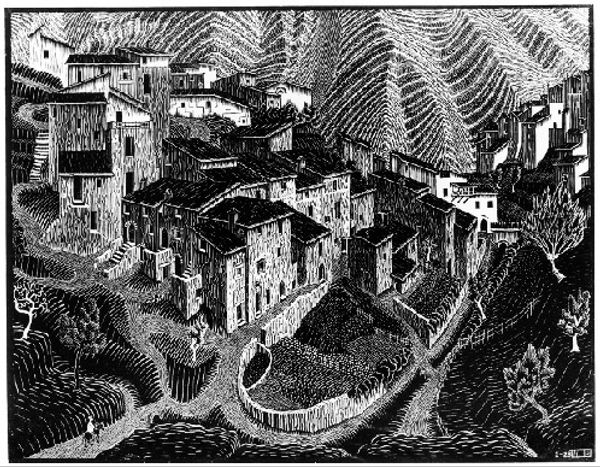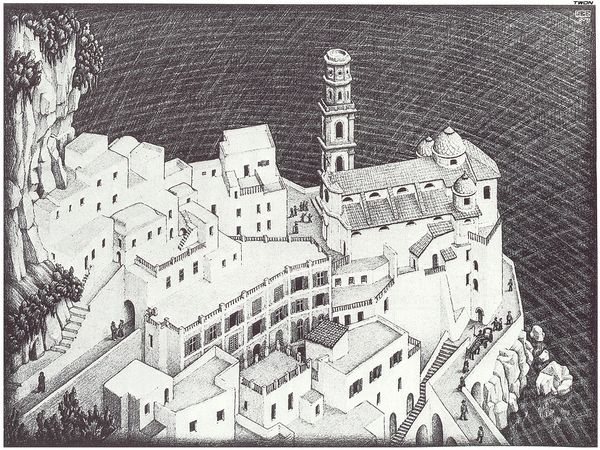
drawing, print, etching, paper, photography, ink, architecture
#
drawing
# print
#
etching
#
paper
#
form
#
photography
#
ink
#
architectural concept
#
geometric
#
orientalism
#
line
#
cityscape
#
islamic-art
#
modernism
#
architecture
Copyright: M.C. Escher,Fair Use
Curator: Editor: So, this is M.C. Escher’s "Kairouan Tunisia" from 1928, an etching printed on paper. It’s a cityscape, almost dreamlike in its geometry and stark contrast. The longer I look at it, the more the image seems to resist easy perspective. What are your thoughts on it? Curator: It's striking how Escher captures Kairouan. He isn't simply documenting a place. The etching becomes a site for exploring orientalist perspectives, the “othering” gaze so common in early 20th-century European art. Consider how he focuses on the architectural forms, reducing people to mere background figures. How might this reflect power dynamics between colonizer and colonized? Editor: That’s a fascinating point. The architecture is definitely the focus, almost like a stage set, with people as props. So you see a critique of colonialism embedded within the image itself? Curator: I think the potential is certainly there. Escher isn’t necessarily advocating for colonialism, but his gaze is shaped by his cultural context. The crisp lines and stark contrasts emphasize the ‘foreignness’ of the scene, constructing a narrative of the Orient as radically different. Consider the absence of everyday life; the buildings are depopulated and abstracted. What does that suggest to you about the artist’s engagement with Tunisian culture? Editor: It’s a distanced perspective. It feels more like an intellectual exercise in form than an attempt to truly connect with or understand the culture of Kairouan. Curator: Precisely! The visual language reinforces that separation. Think about the way modernism intersected with orientalism during this period and how artists often borrowed forms and styles without engaging with the underlying cultural and historical complexities. This work becomes a powerful lens through which we can analyze the colonial gaze and its artistic manifestations. Editor: This has definitely given me a lot to think about! It is amazing how an image can encapsulate and reflect on societal structures and colonial biases. Curator: Indeed. By examining Escher's choices, we begin to unravel how art can unintentionally reinforce or critique power dynamics.
Comments
No comments
Be the first to comment and join the conversation on the ultimate creative platform.

